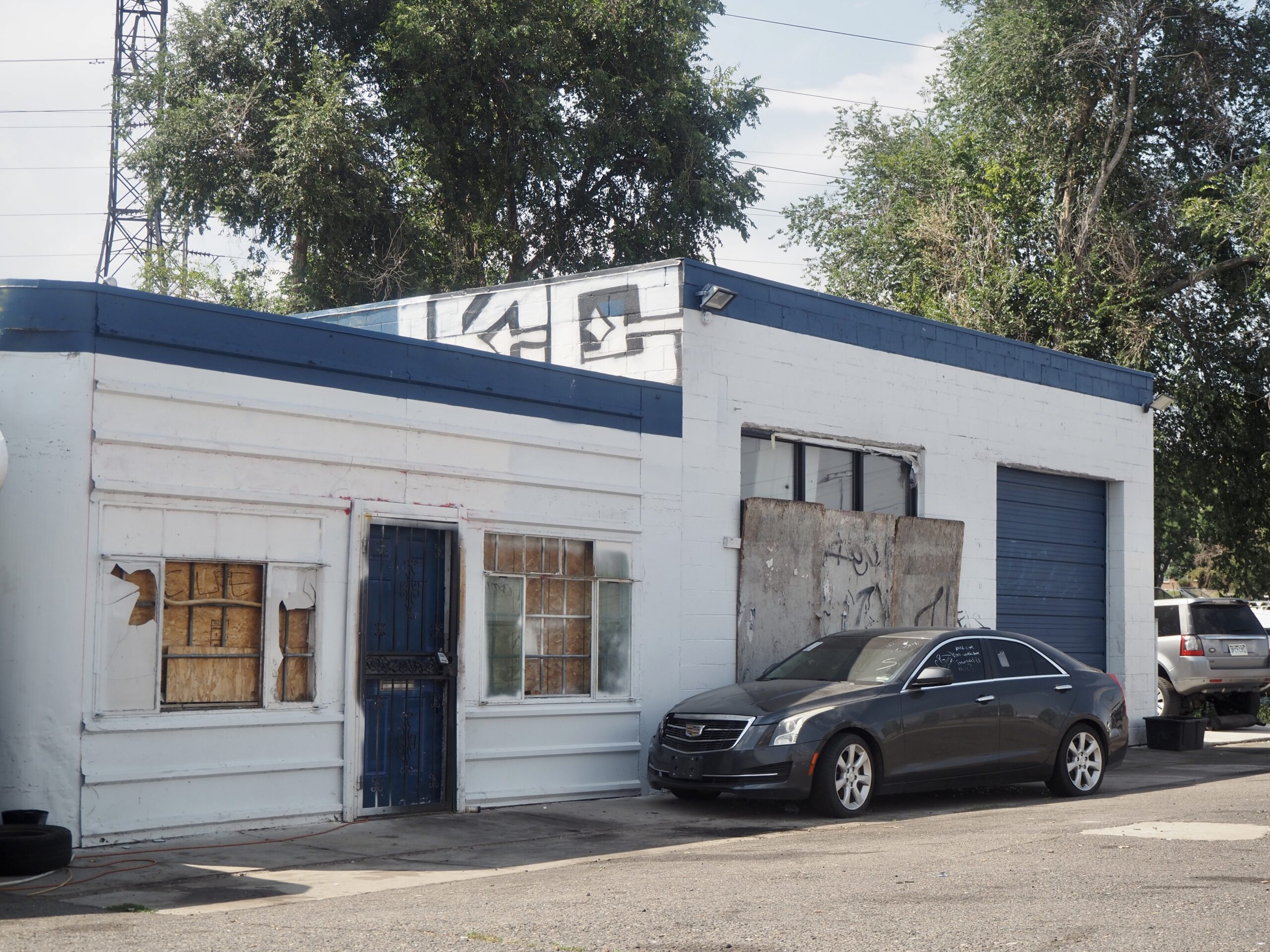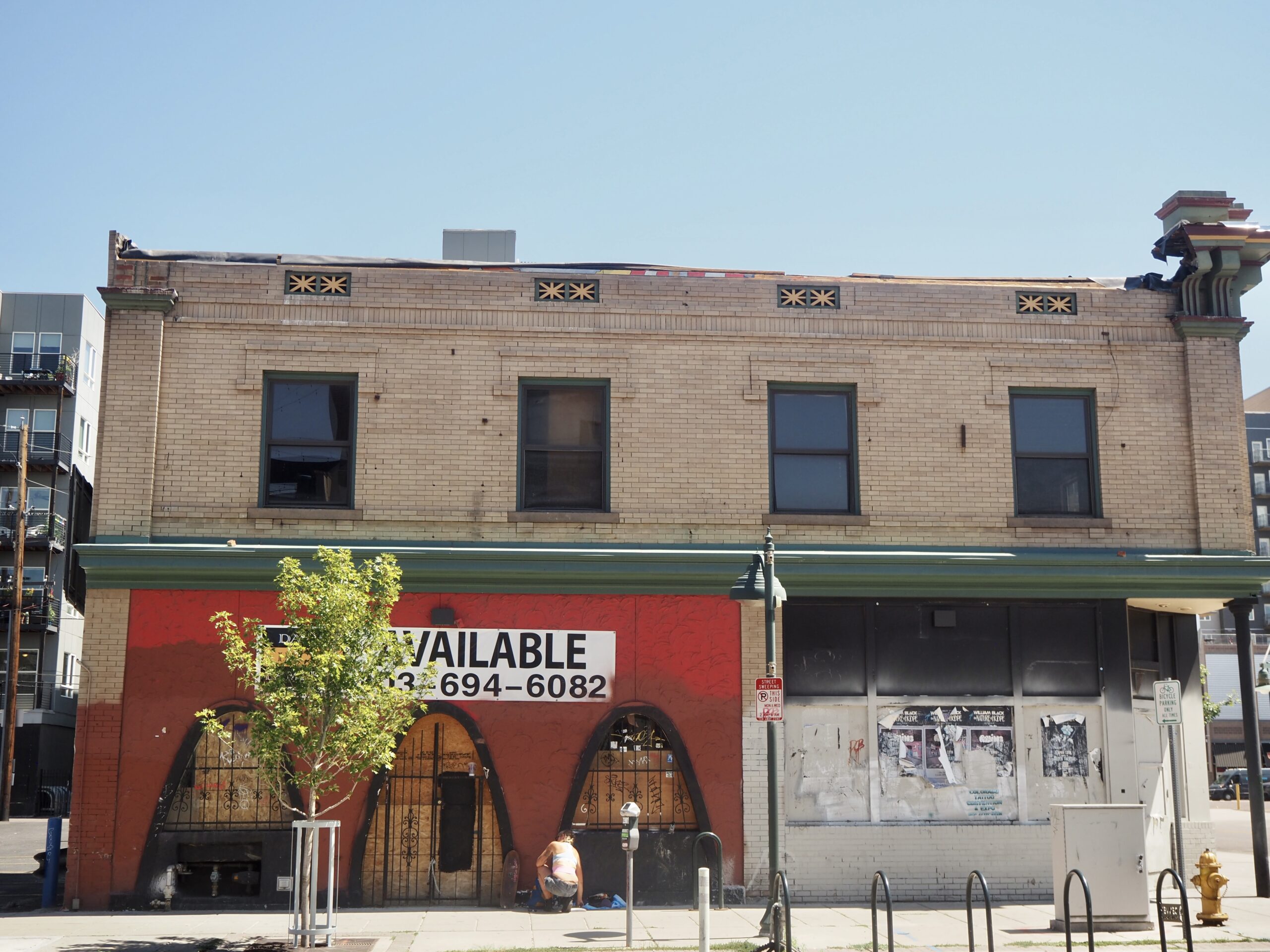
Paperwork outside a building at 539 N. Bannock St. notes it has been added to Denver’s list of neglected and derelict buildings. (Matt Geiger/BusinessDen)
A seemingly innocuous building along Federal Boulevard nestled against a city park has been the source of two dozen police calls and the subject of criminal investigations ranging from human trafficking to drug sales.
Across town at 1600-1618 E. Colfax Ave, two buildings have been vacant for years. They both were torched by a fire earlier this year.
These properties are just a few of those on Denver’s list of “neglected and derelict” buildings. The formal designation aims to get the city’s most troubled structures back on solid footing, although the process is being targeted for possible changes.
“I can’t think of many issues that touch every (council) district quite as intimately as this does,” Councilman Paul Kashmann said at a council briefing on the program last month.
As of this week, the list contains 164 properties, the majority of them single-family homes. The city in January hired a full-time employee who works to manage and enforce the list, and so far this year, 80 buildings have been added to the list. That compares to 21 in all of 2023.
Even Denver’s more upscale neighborhoods make an appearance on the list. In Cherry Creek, three adjacent properties clustered on Jackson Street qualify, while neighboring Hilltop has two. Belcaro has a single-family home at 950 S. University Blvd. meeting the mark. LoHi has three.
Downtown and Wash Park, notably, do not have a single property on the list.
But derelict properties align more with streets than neighborhoods. Over a dozen properties flagged by Denver sit along Colfax. Speer has eight, most of which are bunched up by 3rd Avenue.
Buildings are typically added to the list via complaints from neighbors, said Alexandra Foster, a spokeswoman for Denver’s Community Planning and Development department. That was the case for a building in Ballpark at 2100 Larimer St., which BusinessDen reported on last week.
When a complaint is received, a city inspector is dispatched, and checks to see if the property meets one of the following criteria:
• The property is unsafe.
• The property is, for any three consecutive months, not lawfully occupied, wholly or partially boarded up, and does not show evidence of substantial and ongoing construction activity.
• The property is not lawfully occupied and has been in violation of city or state law on three separate occasions within a two-year period.
• The property is not lawfully occupied and at least one year behind on property taxes.
• The property is a neighborhood nuisance.
• The property is classified as historic but not being preserved in accordance with city rules;

This building at 1251 N. Federal Blvd. in Denver is on the city’s list of neglected and derelict buildings. (Matt Geiger/BusinessDen)
If at least one of the above is true, the building is added to the list, and the process of getting it up to code begins. The owner of the unsightly property must submit a “remedial plan” to the city within 30 days.
“Once on the list, our inspections team will work with the property owner to secure the site in the short-term and develop a plan for addressing code and safety issues in the longer term,” Foster said. “Buildings stay on the list until all issues have been addressed and they are in compliance. In the meantime, city inspectors check the buildings on the list on a regular basis to make sure they are safe and not accessible.”
Fifteen buildings have been on the list for more than seven years, according to the city. But Denver doesn’t have any special way to crack down on properties which have been listed for an extended period of time.
Councilmembers Amanda Sawyer, Jamie Torres and Kashmann directed their staff to research and present possible updates to the code in a meeting that occurred late last month. Discussions also spilled into what to do with properties that intentionally remain vacant.
“We even see it downtown, some of those (properties) are held open or vacant until a higher-rent occupant can come in, which is a really difficult thing to have our neighborhoods deal with,” Torres said.

The building at 2100 Larimer St. was added to the list last month. (Matt Geiger/BusinessDen)
Council staff members said the policies and procedures related to the list haven’t been updated since 2012. In that time, nearby municipalities like Lakewood, and other cities around the country, have enacted various procedures for these types of buildings, which the staffers said they’re studying. But staffing capacity is a huge hurdle Denver will need to overcome to create a stricter, more enforceable code.
“We have to have more teeth,” Amanda Sawyer said. “Our staff needs to be supported better, whether it be in numbers, whether it be in resources, whether it be in the actual language of the ordinance itself.”
